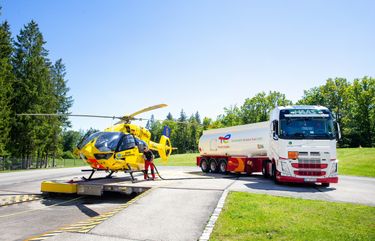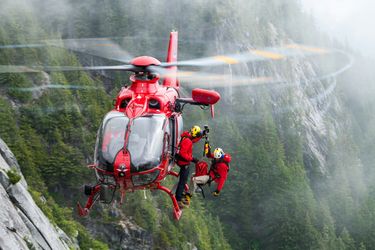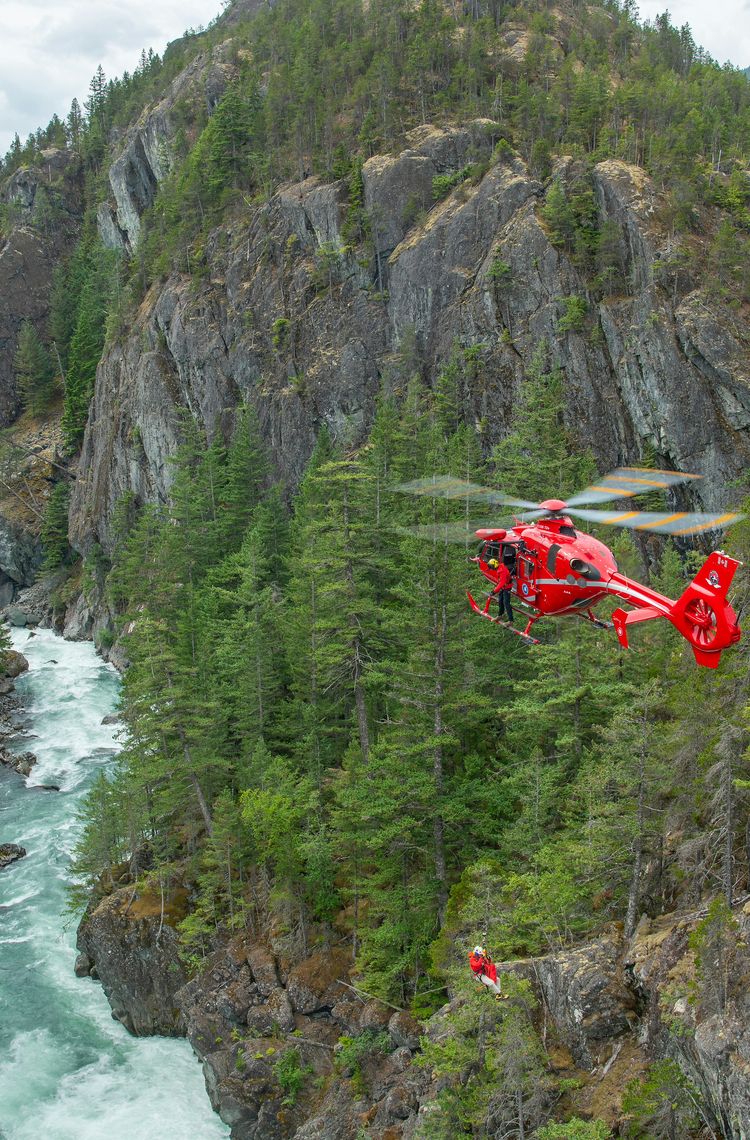Helicopters fly essential missions and can literally make life-saving interventions. With such an important role, there might be an assumption that their environmental impact might be less of a priority. Yet, in increasing numbers helicopter operators are committing themselves to reducing their emissions in a variety of ways.
Protecting the environment for future generations forms a key part of Airbus’ mission to make the world a safer and more united place. Exploring this commitment to preparing the future, we take a look at the three customers who are leading the way in investing in clean flight.

Pioneers for the Greater Good: ADAC Luftrettung
With 1.2 million missions in over 50 years of saving lives, air rescue operator ADAC Luftrettung is a true pioneer of Helicopter Emergency Medical Services (HEMS). However, as a non-profit organisation it also wants to break new ground in reducing CO2 emissions. CEO Frédéric Bruder explains why the company takes the responsibility for protecting the environment equally seriously.
When did ADAC Luftrettung first use Sustainable Aviation Fuel?
Frédéric Bruder: On June 7, 2021, an ADAC Luftrettung rescue helicopter flew on sustainable aviation fuel (SAF) for the first time, setting a new milestone in international aviation. The Airbus H145 rescue helicopter, with its Arriel 2E engines, was ceremonially refuelled with biofuel, a type of SAF, at the air rescue base at Munich's Harlaching Hospital. The H145 used a second-generation biofuel for the first rescue helicopter flight worldwide.

We subsequently expanded our commitment and have initiated two scientific research projects: Since December 2021, we have been testing the use of SAF at our air rescue base "Christoph Rheinland" at Cologne/Bonn Airport. In cooperation with Safran Helicopter Engines, Airbus Helicopters and the National German Aerospace Center (DLR), we are investigating the long-term effects of bio-kerosene on the technology and engines of the Airbus H145 helicopter. In September 2022, we went into trial operation with another site: In Aachen, "Christoph Europa 1" is also flying rescue missions with bio-kerosene. An Airbus EC 135 with Pratt & Whitney engines is used there. The HEFA blend is currently between 31 and 35 %, which means that a CO2 reduction of 25 % can already be achieved by using SAF. With an increase in the proportion of biofuel, CO2 savings potentials of 80 % and more will be possible in the future. The goal is to accumulate 1,000 flight hours with SAF in each of the two research projects.

Why did you make this a priority?
Frédéric Bruder: We have always been pioneers at ADAC Luftrettung. Although our primary mission is to save lives with our rescue helicopters we are of course aware of the impact our type of operation has on the environment. By the way – not only in terms of emissions, also in terms of noise and many other aspects. Based on our by-laws and our statute as a non-profit organisation paired with our will to be pioneers for the greater good, we want to play an active part in achieving the ambitious climate targets in Germany and Europe. Sustainability is a central issue for ADAC Luftrettung, and we are increasingly aligning our company and our actions to it. We have set ourselves the ambitious goal of being a pioneer in CO2 reduction in air rescue on a global scale.
Offsetting CO2 strategy: Blackcomb Helicopters
Sustainable Aviation Fuel is not the only method operators can use to achieve a net reduction in emissions. Blackcomb Helicopters, who fly an array of missions in British Columbia, Canada, explains their CO2 offsetting strategy.
How do you measure the CO2 output of each helicopter in your fleet?
Blackcomb Helicopters: In order to do the best job of deciding how, how much and how to offset, we work with a partner out of Victoria and they apply a proven auditing system to our company, and they look at all aspects of operations. Obviously, the consumption of kerosene is our number one contributor to our carbon footprint. However, we also look at commercial flights that our crews take, repositioning, transport, ground transport and all aspects of our business from how we handle recycling to electric, providing charging for electric vehicles for our employees at our facilities and modernising our own fleet towards electric as well. So, with that process, we establish exactly as close as possible how many tons of carbon we're emitting.

How do you offset your CO2 output?
We just completed an audit here in the last few weeks and our organisation had an output of 4,600 tonnes of CO2. And we will offset 100% of that. We work with the Nature Conservancy of Canada on a project in the West Kootenay Mountains, where a large area is referred to as the Dark Woods Conservancy, and it is setting aside this forest for the next 100 years minimum. This would have been logged. It is pristine forest that the logging industry was very interested in. The Nature Conservancy took the steps of protecting and managing that. So, for now, it's the first step. We all know offsetting isn't perfect, but it's what's available to us at this time. Of course, we're looking forward to the availability of sustainable aviation fuel as our next step.
Investing in the future: aviation leasing company LCI
Jaspal Jandu, CEO of the aviation leasing company LCI explains how they are addressing sustainability challenges with efficient operations, awareness, and investments in the future.
As a lessor, what different sustainability elements does LCI consider when deciding on new helicopters?
Jaspal Jandu: LCI is an aviation leasing company and we are actively addressing sustainability challenges in three key areas. Number one, at a business level we are running our products, business and leasing platform as efficiently as we possibly can. Number two we are investing significant amount of capital in new technology aircraft and promoting the use of SAF and SAF-like fuels in such products. Number three we are raising awareness and engaging at a broader level to ensure that financiers and investors understand how important sustainability is – I think as a leasing company we are uniquely positioned to drive that message home.
In terms of asset investing, we have a broad range of assessment criteria. Of course, any near-term improvements in operating performance, particularly in payload or range, are attractive. However, we also take a longer-term view on how attractive an asset may or may not be in 25 or 30 years’ time. Over such horizons, it can be said that sustainability arguments will only get louder from their current volume and, therefore, they become even more important to us. For example, we have just recently made an order with Airbus Helicopters for the H175, which incorporates modern and incredibly fuel-efficient technology, and the helicopter can perform missions that older technology simply can’t match. In addition, we are part of Airbus Helicopters’ Sustainable Aviation Forum (SAF), which looks to provide feedback on how we're going to use SAF in the technology products and what it means for a long-term residual value. So, I can only speak from experience by saying sustainability and general social consciousness is becoming a very important factor in how we allocate capital in this sector.
